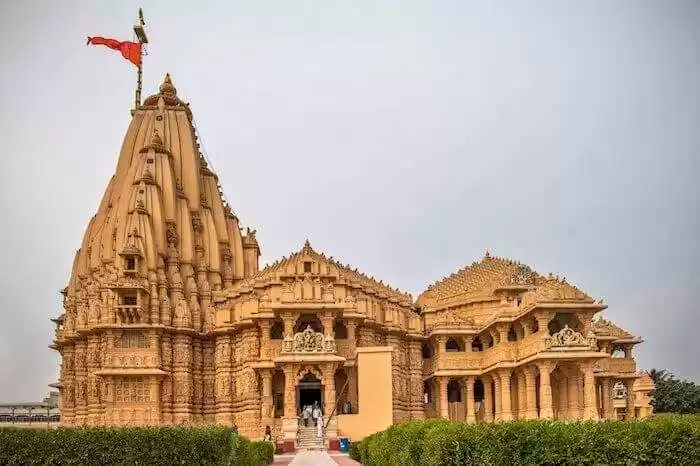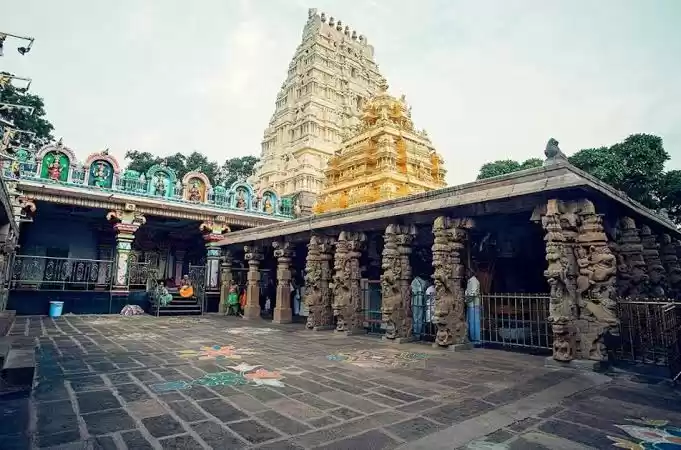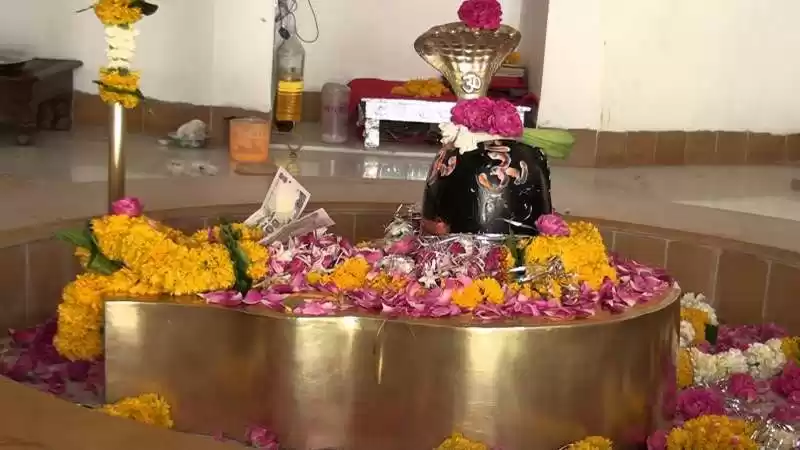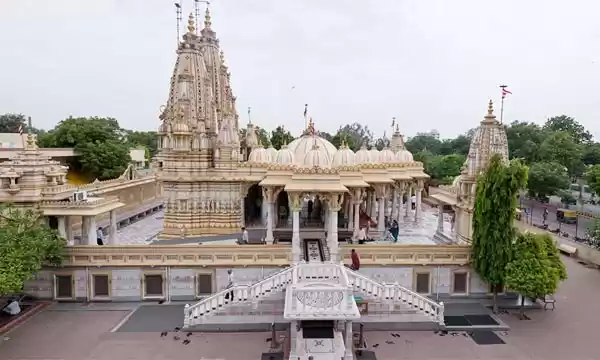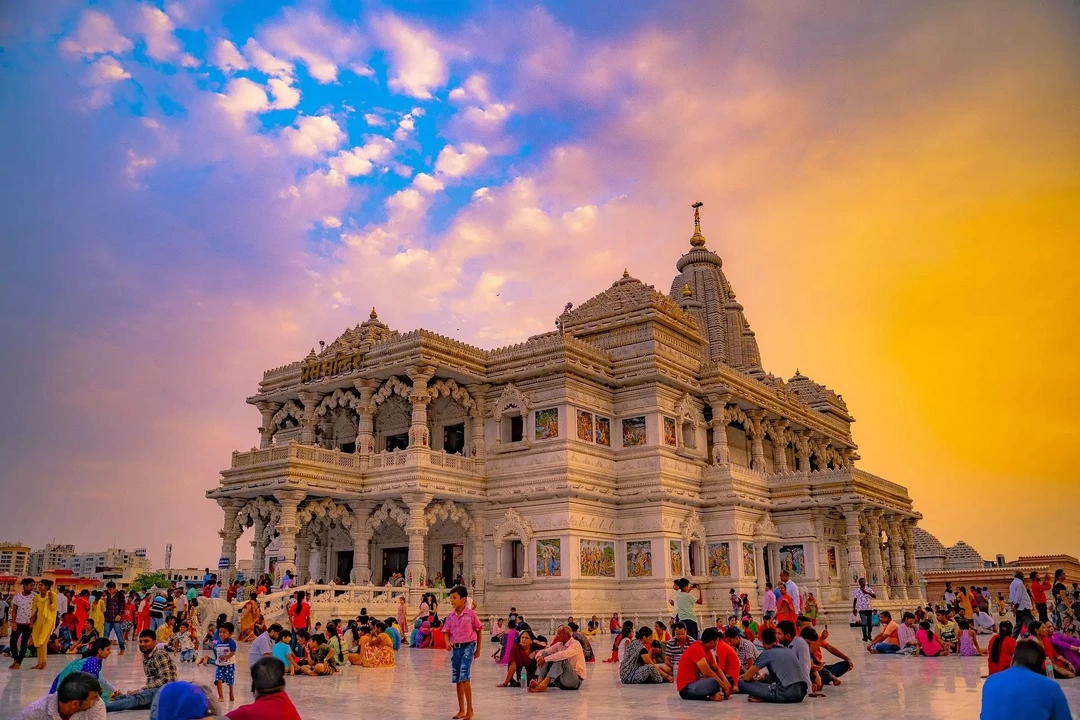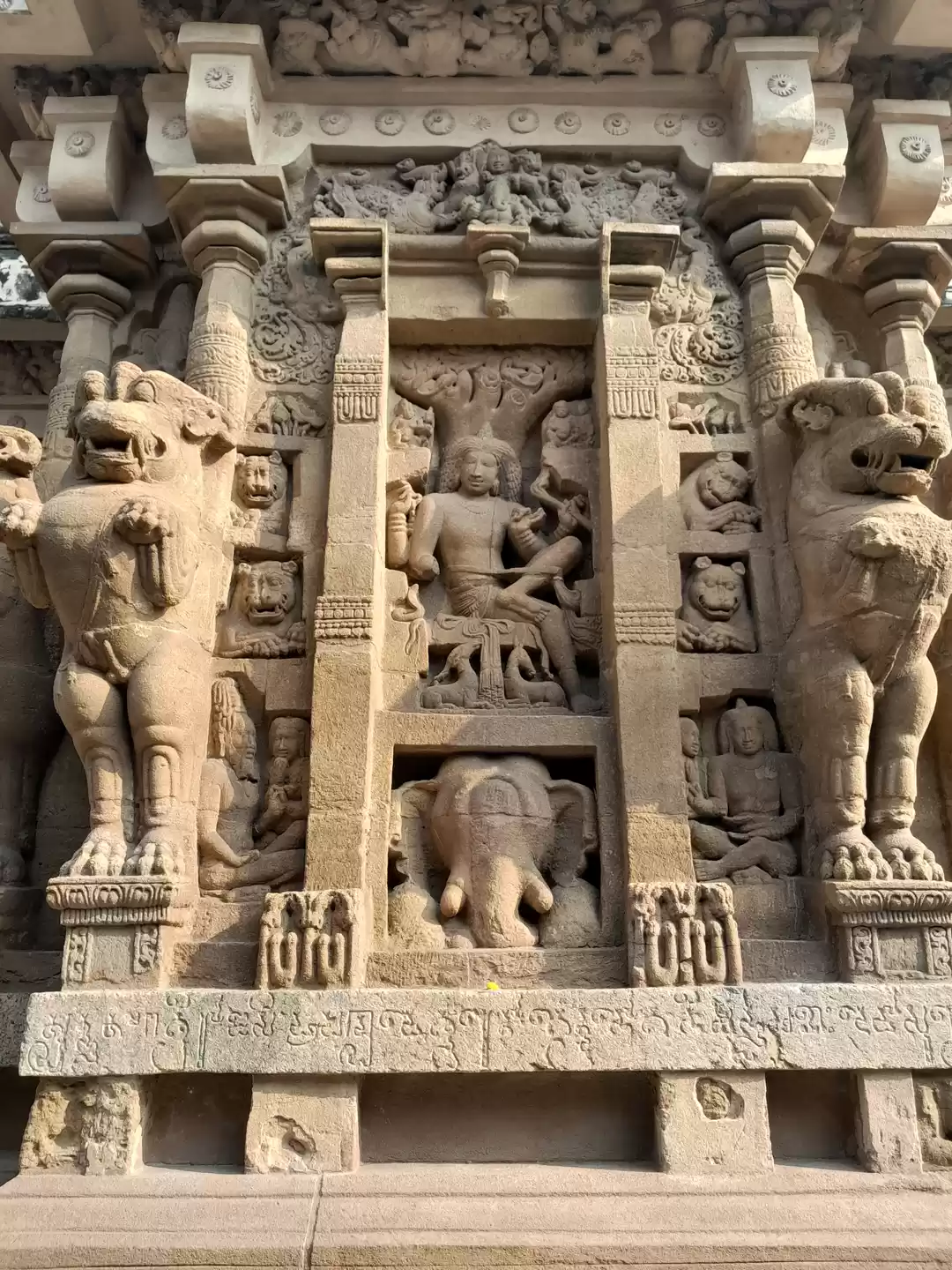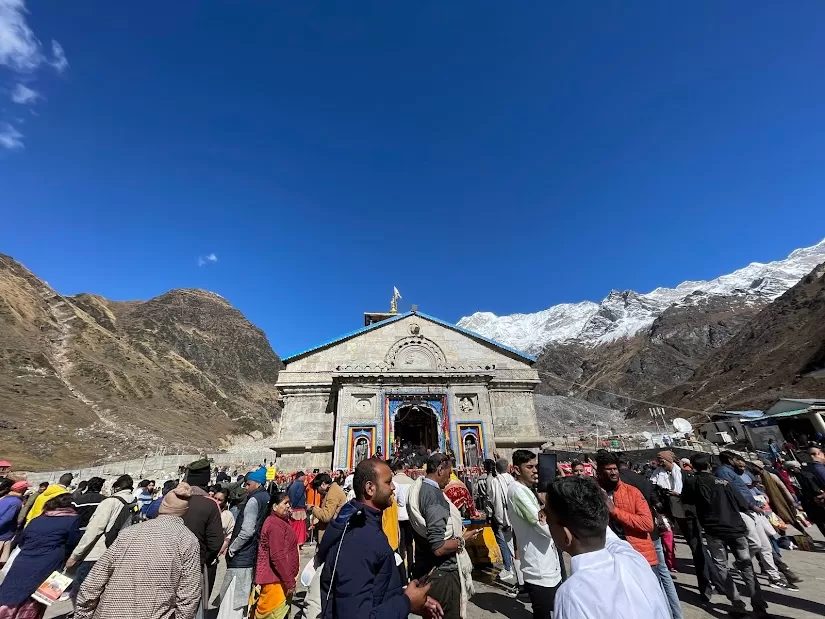
Jyotirlingam, is a devotional representation of the Hindu god Shiva. The word is a Sanskrit compound of Jyotis ('radiance') and linga ('sign'). The Śiva Mahāpurāṇam (also Shiva Purana) mentions 64 original jyotirlinga shrines in India(As per Wiki).
According to a Shaiva legend from the Shiva Purana, once, Brahma (the god of creation) and Vishnu (the god of preservation) had an argument over their supremacy. To settle the debate, Shiva pierced the three worlds, appearing as a huge, infinite pillar of light, the jyotirlinga. Brahma and Vishnu decided to ascend and descend across a pillar of light respectively, to find the end of the light in either direction. According to some iterations, Vishnu assumed his Varaha avatar to achieve this task, while Brahma rode a hamsa (swan). Brahma lied that he had discovered the end of the light, producing a ketakī flower as proof, while Vishnu admitted that he could not find the end of the light from his journey. The dishonesty of Brahma angered Shiva, causing him to curse the creator deity that he would not be worshipped; he also declared that Vishnu would be eternally worshipped for his honesty. The jyotirlinga shrines are regarded to be the temples where Shiva appeared as a fiery column of light.
Jyotirlingas are sacred shrines dedicated to Lord Shiva in Hinduism. There are 12 prominent Jyotirlingas located in different parts of India. These shrines are considered highly significant for Shiva devotees and are places of great religious and spiritual importance.

Located in Prabhas Patan, Gujarat, it is believed to be the first among the twelve Jyotirlingas. Somnath temple stands at the shore of the Arabian ocean on the western corner of Indian subcontinent in Gujarat State. This pilgrimage is one of the oldest and finds its reference in the ancient texts like Skandpuran, Shreemad Bhagavat, Shivpuran etc. The hymn from Rig-Veda quoted below mention the Bhagvan Someshwar along with the great pilgrimage like Gangaji, Yamunaji and Eastward Saraswati. This signifies the ancient value of this Tirthdham.

Situated in Srisailam, Andhra Pradesh, this temple is dedicated to Lord Mallikarjuna (Shiva) and Goddess Bhramaramba (Parvati). Mallikarjuna Jyotirlinga is special in that it is both a jyotirlinga and a Shakti Peetha (special shrine to Shakti Devi.It is believed that Lord Shiva appeared as Arjuna on Amavasya (No moon day) and Goddess Parvati as Mallika on Poornima (full moon day), and hence the name Mallikarjuna.
The temple is a work of architecture with its tall towers and beautiful carvings. It is also enclosed within tall walls that fortify it.
Devotees believe that visiting this temple brings them wealth and fame.
It is believed that Goddess Parvati fought the demon Mahishasura by transforming herself into a bee. Devotees believe they can still hear a bee buzzing through a hole in the Bhramaramba temple!

Located in Ujjain, Madhya Pradesh, this temple houses the Jyotirlinga known as Mahakaleshwar. The idol of Mahakaleshwar is known to be dakshinamukhi, which means that it is facing the south. This is a unique feature, upheld by the tantric shivnetra tradition to be found only in Mahakaleshwar among the 12 Jyotirlingas. T The images of Ganesh, Parvati and Karttikeya are installed in the west, north, and east of the sanctum sanctorum. To the south is the image of Nandi, the vehicle of Shiva. The idol of Nagchandreshwar on the third storey is open for darshan only on the day of Nag Panchami. The Mahakal dominates the life of the city and its people, even in the midst of the busy routine of modern preoccupations, and provides an unbreakable link with ancient Hindu traditions.

Situated on Mandhata Island in the Narmada River, Madhya Pradesh, this temple is dedicated to Lord Omkareshwar (Shiva).As per Hindu legend, Vindhya, the deity controlling the Vindhyachal mountain range was worshipping Shiva to propitiate himself from the sins committed. He created a sacred geometrical diagram and a Lingam made of sand and clay. Shiva was pleased with the worship and believed to have appeared in two forms, namely Omkareshwar and Amaleswara. Since the mud mound appeared in the form of Om, the island came to be known as Omkareswar.

Nestled in the Himalayas of Uttarakhand, Kedarnath is one of the holiest shrines of Lord Shiva. The temple is located on the Garhwal Himalayan range[citation needed] near the Mandakini river, in the state of Uttarakhand, India. Due to extreme weather conditions, the temple is open to the general public only between the months of April (Akshaya Tritiya) and November (Kartik Purnima, the autumn full moon). During the winters, the vigraha (deity) of the temple is carried down to Ukhimath to be worshipped for the next six months. Kedarnath is seen as a homogenous form of Shiva, the 'Lord of Kedarkhand', the historical name of the region.
An unusual feature of the temple is the head of a man carved in the triangular stone lingam. Such a head is seen carved in another temple nearby constructed on the site where the marriage of Shiva and Parvati was held. Adi Shankara was believed to have revived this temple, along with Badrinath and other temples of Uttarakhand; he is believed to have attained Mahasamadhi at Kedarnath. Behind the temple is the samādhi mandir of Adi Sankara.

Located near Pune, Maharashtra, this temple is associated with the legend of Lord Shiva and the demon Bhima.According to Namdev, a saint in the medieval era, Saint Jnaneshwar went to Tryambakeshwar and then Bhimashankar. Namdev himself has also visited this place.
Bhimashankaram shrine and the Bhimarathi river have been talked about in writings as far back as the 13th century;[4] however, the current construction of the temple seems to be fairly new. On the peak of the Sahyadri hills, it is said that Shiva assumed the form of "Bhīmā Shankara" at the behest of the Gods, and the sweat that spilled from his body after the battle is said to have formed the Bhimarathi river.
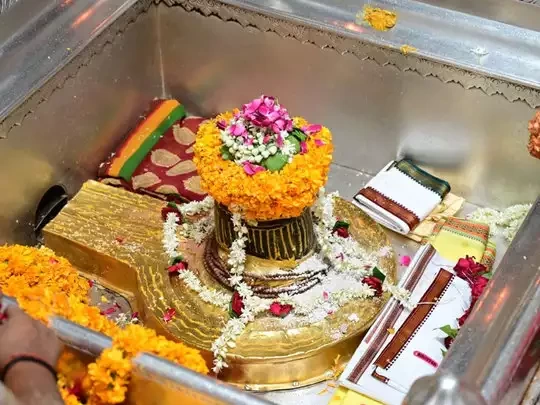
Situated in Varanasi, Uttar Pradesh, the Kashi Vishwanath Temple is one of the most sacred temples for Shiva devotees.The temple is one of the most sacred Hindu pilgrimage sites and is among the twelve Jyotirlinga, shrines which are said to be the most sacred abodes of Shiva. Standing on the western banks of the Ganges, the presiding deity is known by the names Shri Vishwanath and Vishweshwara , literally meaning Lord of the Universe.
According to Hindu belief, visiting the Kashi Vishwanath Temple and bathing in the Ganges River are significant steps on the way to freedom, or moksha. Thus, devotees from all over the country make an effort to visit Varanasi at least once in their lifetime.

Located near Nashik, Maharashtra, this temple is dedicated to Lord Trimbak, a form of Lord Shiva.

Also known as Vaijnath, this temple is situated in Deoghar, Jharkhand. According to Hindu beliefs, it is said that the demon king Ravana worshipped Shiva at this location to gain divine blessings, which he used to cause chaos and destruction in the world. Ravana offered his ten heads as a symbol of sacrifice to Lord Shiva. Pleased with this gesture, Lord Shiva descended Ravana's injuries. As Lord Shiva acted as a doctor, he is also referred to as Vaidya ("doctor"). The temple is named after this aspect of Shiva.

Located near Dwarka in Gujarat, this temple is dedicated to Lord Nageshwar (Shiva).Some individuals believe that the Dwarka Shivalinga in Gujrat represents the Nageshwara Jyotirlinga.The Shiva Purana says Nageshvara Jyotirlinga is in 'the Darukavana', which is an ancient name of a forest in India. 'Darukavana' finds mention in Indian epics, such as Kamyakavana, Dvaitavana, Dandakavana.
A narrative in the Shiva Purana about the Nageshvara Jyotirlinga tells of a demon named Daruk, who attacked a Shiva devotee named Supriya and imprisoned him along with many others in his city of Darukavana, a city under the sea inhabited by sea snakes and demons. At the urgent exhortations of Supriya, the prisoners started to chant the holy mantra of Shiva. Immediately after that, Shiva appeared and the demon was vanquished,[3] later residing there in the form of a Jyotirlinga. The demon had a wife, a demoness named Daruka, who worshipped Mata Parvati. As a result of her penance and devotion, Mata Parvati enabled her to master the forest, where she performed her devotions and renamed the forest 'Darukavana' in her honour.
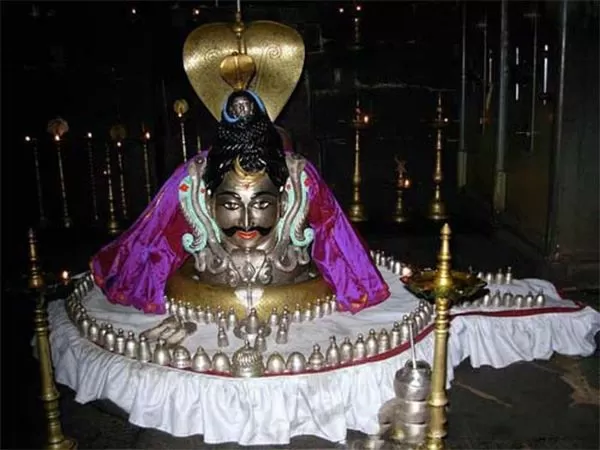
Situated on Rameswaram Island in Tamil Nadu, this temple is associated with Lord Rama and is believed to have been consecrated by him.It is one of the 275 Paadal Petra Sthalams, where Nayanars (Saivite saints), Appar, Sundarar and Tirugnana Sambandar, have glorified the temple with their songs. The temple was expanded during the 12th century by the Pandya Dynasty, and its principal shrine’s sanctum was renovated by Jeyaveera Cinkaiariyan and his successor Gunaveera Cinkaiariyan, monarchs of the Jaffna kingdom. The temple has the longest corridor among all Hindu temples in India. It was built by King Muthuramalinga Sethupathiy.[1][2] The temple, located in Rameswaram, is considered a holy pilgrimage site for Shaivites, Vaishnavites and Smarthas. Mythological accounts depict the presiding deity, the Lingam of Ramanathaswamy (Shiva), as having been established and worshiped by Rama, before he crossed his bridge to the present-day island of Sri Lanka. It is one of the Char Dham pilgrimage sites.

Grishneshwar Jyotirlinga: Located near Ellora, Maharashtra, this temple is dedicated to Lord Grishneshwar (Shiva). The mandir is a national protected site, one and half kilo meters away from UNESCO World Heritage Site the Ellora Caves, 30 kilometres (19 miles) far north-west of the city Sambhaji Nagar, and 300 kilometres (190 miles) east-northeast far from Mumbai.
Pilgrimage to these Jyotirlingas is an important aspect of Hindu religious practice, and it is believed that visiting all twelve of them can lead to spiritual enlightenment and the blessings of Lord Shiva.
Jai MAHAKAL...




























